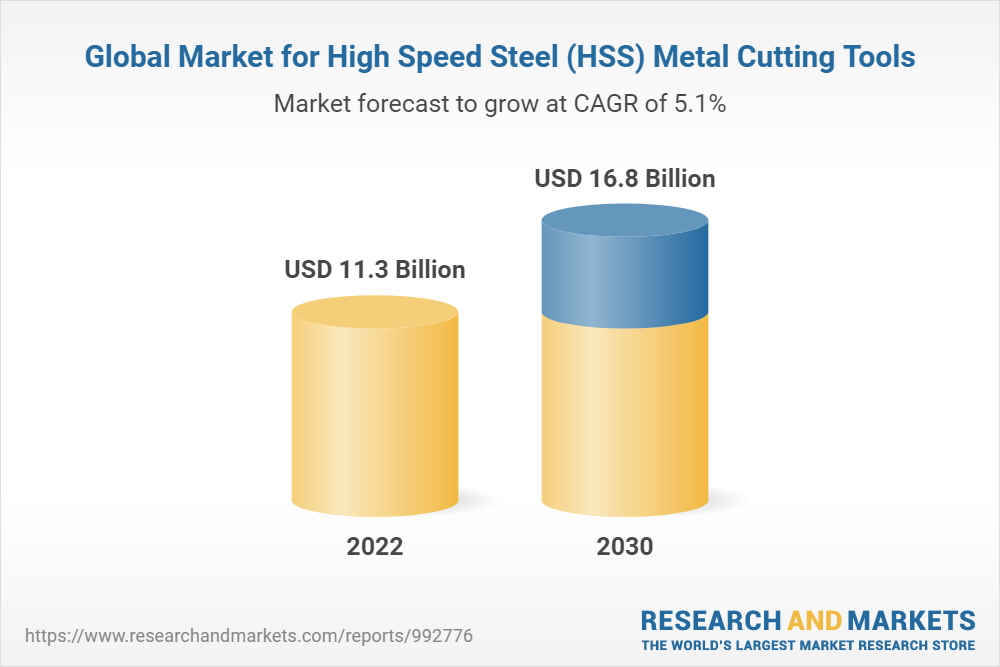
The global market for high speed steel (HSS) metal-cutting tools estimated at $11.3 billion in the year 2022, is projected to reach a revised size of $16.8 billion by 2030, growing at a CAGR of 5.1% over the analysis period 2022-2030.
HSS Tapping Tools, one of the segments analyzed in the report, is projected to record a 5.5% CAGR and reach US$6.9 Billion by the end of the analysis period. Taking into account the ongoing post pandemic recovery, growth in the HSS Milling Tools segment is readjusted to a revised 4.6% CAGR for the next 8-year period.
U.S. market estimated at $3.1 billion, China forecast to grow at 8.6% CAGR
The high speed steel (HSS) metal-cutting tools market in the U.S. is estimated at $3.1 billion in the year 2022. China, the world's second largest economy, is forecast to reach a projected market size of $3.7 billion by the year 2030 trailing a CAGR of 8.6% over the analysis period 2022 to 2030.
Among the other noteworthy geographic markets are Japan and Canada, each forecast to grow at 2.6% and 4.2% respectively over the 2022-2030 period. Within Europe, Germany is forecast to grow at approximately 3.3% CAGR. Led by countries such as Australia, India, and South Korea, the market in Asia-Pacific is forecast to reach US$2.3 Billion by the year 2030.
Related Glossary Terms
- gang cutting ( milling)
gang cutting ( milling)
Machining with several cutters mounted on a single arbor, generally for simultaneous cutting.
- high-speed steels ( HSS)
high-speed steels ( HSS)
Available in two major types: tungsten high-speed steels (designated by letter T having tungsten as the principal alloying element) and molybdenum high-speed steels (designated by letter M having molybdenum as the principal alloying element). The type T high-speed steels containing cobalt have higher wear resistance and greater red (hot) hardness, withstanding cutting temperature up to 1,100º F (590º C). The type T steels are used to fabricate metalcutting tools (milling cutters, drills, reamers and taps), woodworking tools, various types of punches and dies, ball and roller bearings. The type M steels are used for cutting tools and various types of dies.
- milling
milling
Machining operation in which metal or other material is removed by applying power to a rotating cutter. In vertical milling, the cutting tool is mounted vertically on the spindle. In horizontal milling, the cutting tool is mounted horizontally, either directly on the spindle or on an arbor. Horizontal milling is further broken down into conventional milling, where the cutter rotates opposite the direction of feed, or “up” into the workpiece; and climb milling, where the cutter rotates in the direction of feed, or “down” into the workpiece. Milling operations include plane or surface milling, endmilling, facemilling, angle milling, form milling and profiling.
- recovery
recovery
Reduction or removal of workhardening effects, without motion of large-angle grain boundaries.
- tapping
tapping
Machining operation in which a tap, with teeth on its periphery, cuts internal threads in a predrilled hole having a smaller diameter than the tap diameter. Threads are formed by a combined rotary and axial-relative motion between tap and workpiece. See tap.
